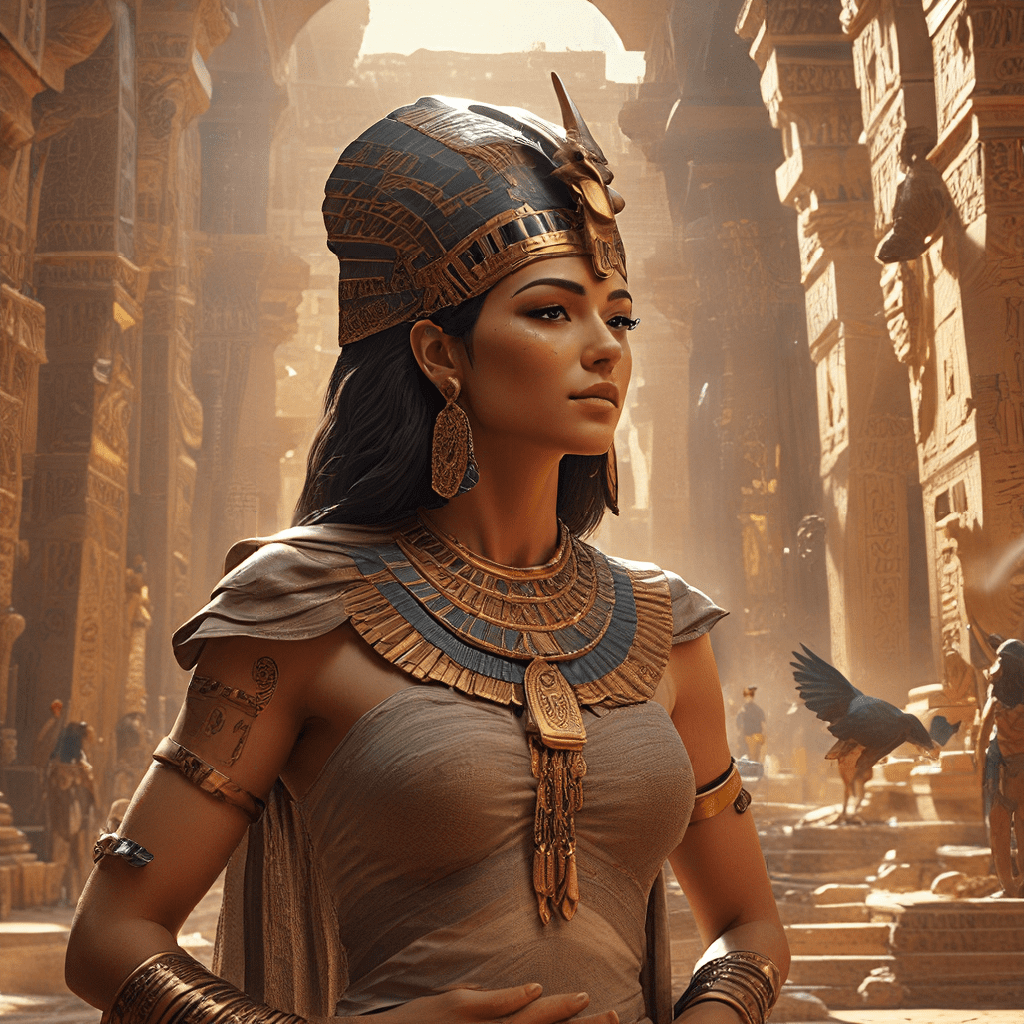1. Introduction: The Enduring Power of Myth
Myths are powerful stories that shape cultures and civilizations. They provide explanations for the mysteries of the world, offer guidance for living, and preserve a people’s history and beliefs. The Egyptian creation myth, like other foundational stories, holds a unique place in their culture, revealing their deep understanding of the universe and their place within it.
2. The Heliopolitan Cosmogony: The Birth of the World
The most well-known Egyptian creation myth is the Heliopolitan cosmogony, a story that originated in the city of Heliopolis. It tells the tale of how the world began from a primordial state of chaos and darkness. This chaos was embodied by the vast waters of Nun, a formless, endless ocean. From these waters emerged Atum, the self-created god. Atum, often depicted as a sun god, was the first being in existence, and he brought forth the world through his own power.
Through various acts of creation, Atum gave birth to other deities. He spat out Shu, the god of air, and Tefnut, the goddess of moisture. These two gods then gave rise to Geb, the god of the earth, and Nut, the goddess of the sky. The world, as we know it, was formed from the bodies of these gods. Geb became the solid ground, while Nut stretched out over him as the sky. This creation story emphasizes the interconnectedness between all things, and the divine origin of the cosmos.
The Heliopolitan creation myth also highlights the central role of the sun god Ra in Egyptian beliefs. In some versions of the myth, Atum is said to be Ra, or Ra eventually takes on the role of supreme creator. Ra’s daily journey across the sky, symbolized by the sun’s movement, represented the continuous cycle of creation, life, and death.
3. The Memphite Cosmogony: Ptah, the Divine Craftsman
Another important Egyptian creation myth comes from the city of Memphis. This version, known as the Memphite cosmogony, focuses on the god Ptah as the ultimate creator. Ptah, associated with craftsmanship and creation, was believed to have brought the world into existence through thought and speech. His heart, representing intellect, and his tongue, representing speech, were the instruments of creation. This myth emphasizes the power of ideas and words to shape reality, a concept that resonated with the Egyptians who placed great value on knowledge and artistic expression.
4. Creation as a Continuous Process: Renewal and Rebirth
The Egyptian creation myths did not simply explain the origins of the world but also reflected their understanding of life as a continuous cycle of renewal and rebirth. The creation myth connected to the cyclical nature of time, symbolized by the sun’s daily journey across the sky. This concept of cyclical time, also found in Egyptian rituals and beliefs, underscored the importance of re-creation and the notion that life continues even after death.
The Egyptian belief in the “ben-ben” stone, a primordial mound believed to have emerged from the primordial waters, further illustrates the concept of continuous creation. The “ben-ben” stone was a symbol of stability, renewal, and the foundation of the world. It represented the ongoing process of creation and the continuous emergence of life from the primordial chaos.
5. Influence on Egyptian Art and Architecture
The Egyptian creation myth profoundly influenced their art and architecture. The sun god Ra, a central figure in the creation story, was often depicted in various forms, including as a scarab beetle, representing the rising sun, and as a falcon, symbolizing his power and majesty. The representation of the world as emerging from the primordial waters was also prevalent in Egyptian art, with scenes depicting boats sailing on the primeval ocean. This imagery reflected the belief that the world was born from chaos and darkness, and the ongoing process of creation and rebirth.
The use of hieroglyphs and symbolic imagery in Egyptian art further reveals the influence of the creation myth. Hieroglyphs, a system of writing that used pictures to represent words and sounds, often depicted deities and symbols from the creation stories. These symbols, imbued with meaning and power, represented the creation myth’s influence on all aspects of Egyptian life.
6. Impact on Egyptian Rituals and Practices
The Egyptian creation myth was inextricably linked to their rituals and practices. The importance of the sun god Ra, who played a central role in the creation story, was reflected in daily life. Egyptians worshiped Ra, offering prayers and sacrifices to ensure his favor and the continuation of the world. The daily rising and setting of the sun served as a constant reminder of the cyclical nature of life and the ongoing process of creation and rebirth.
The Egyptian creation myths provided a framework for understanding their relationship with the gods and the universe. Their beliefs in creation, renewal, and cyclical time influenced their rituals and practices, shaping their view of life and death, and the cosmos itself. The creation myth, with its profound impact on their culture, continues to inspire and fascinate us today.




